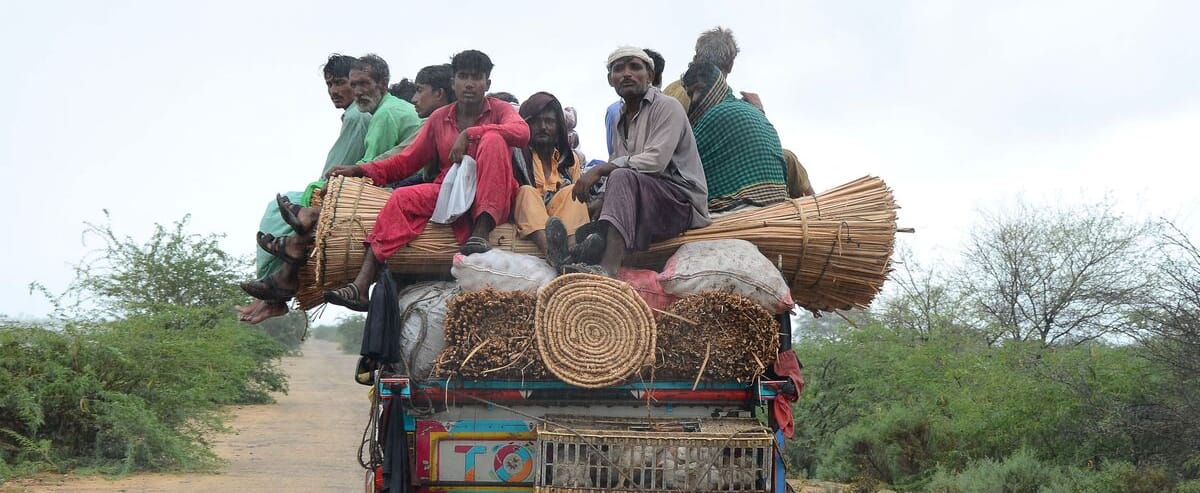More than 100,000 people have been evacuated in India and Pakistan ahead of a powerful cyclone expected to land on Thursday evening that threatens to destroy homes and rip out power lines, authorities in both countries said.
• Read also: Pakistan: at least 27 dead caused by violent weather
• Read also: At least 42 dead and thousands displaced after Haiti floods
Cyclone Biparjoy – which means “disaster” in Bengali – continues its course on Wednesday in the Arabian Sea and should make landfall on Thursday evening with the rank of “very intense cyclonic storm”, according to the meteorological agencies of the two countries.
Strong winds with gusts of up to 150 km / h, accompanied by very heavy rainfall, are expected to sweep a 325 km long coastal area, straddling the Indian state of Gujarat and the Karachi region in Pakistan.
Gujarat authorities say torrential rains and strong winds as the cyclone approaches have already killed five people, including two children crushed by a collapsing wall and a woman hit by a falling tree. that she was riding a moped.
“More than 47,000 people have been evacuated from the coast and low-rise settlements to shelter,” said CC Patel, the relief operations manager for Gujarat State, adding that d Other evacuations were going to take place during the day.
On the Pakistani side, 62,000 people have been displaced from the southeastern coastal area and 75 reception centres, mostly schools and colleges, have been opened, reported the Minister in charge of Climate Change, Sherry Rehman.
India’s meteorological department predicts the cyclone will make landfall near the Indian port of Jakhau, warning of “total destruction” of traditional houses with mud walls and corrugated iron roofs.
In addition to housing, the cyclone could destroy crops, “rip out electricity and telecommunications poles” and cause damage to rail and road networks.
In the coastal town of Mandvi in India, the streets were almost deserted on Wednesday, except for a few stray dogs on the beach swept by strong gusts of wind, under a tormented sky.
The Gujarat state government released photos showing residents boarding inland buses, carrying only small bags containing personal effects.
In Pakistan, fishermen were asked to stay ashore and small planes were grounded, according to Minister Sherry Rehman, who did not rule out flooding in the streets of Karachi, a megacity of around 20 million. of inhabitants.
“We apply a precautionary principle rather than a wait-and-see policy,” she told reporters in Islamabad. “Our priority is to save lives. »
India’s armed forces are “ready to provide all possible assistance”, Defense Minister Rajnath Singh tweeted, with disaster response teams mobilized, while warning of the risk “of flooding in some low areas”.
Cyclones – also known as hurricanes in the North Atlantic and typhoons in the Pacific – are a regular threat to the northern Indian Ocean coasts, where tens of millions of people live. According to scientists, these phenomena tend to become more violent due to global warming.
Scientists have warned of growing storms as the world heats up with climate change.
Roxy Mathew Koll, a climatologist at the Indian Institute of Tropical Meteorology, said cyclones draw their energy from warm waters and surface temperatures in the Arabian Sea were 1.2 to 1.4 degrees Celsius warmer than four decades ago.
“The rapid warming of the Arabian Sea, coupled with global warming, tends to increase heat flux from the ocean to the atmosphere and promote more intense cyclones,” Koll told AFP.

